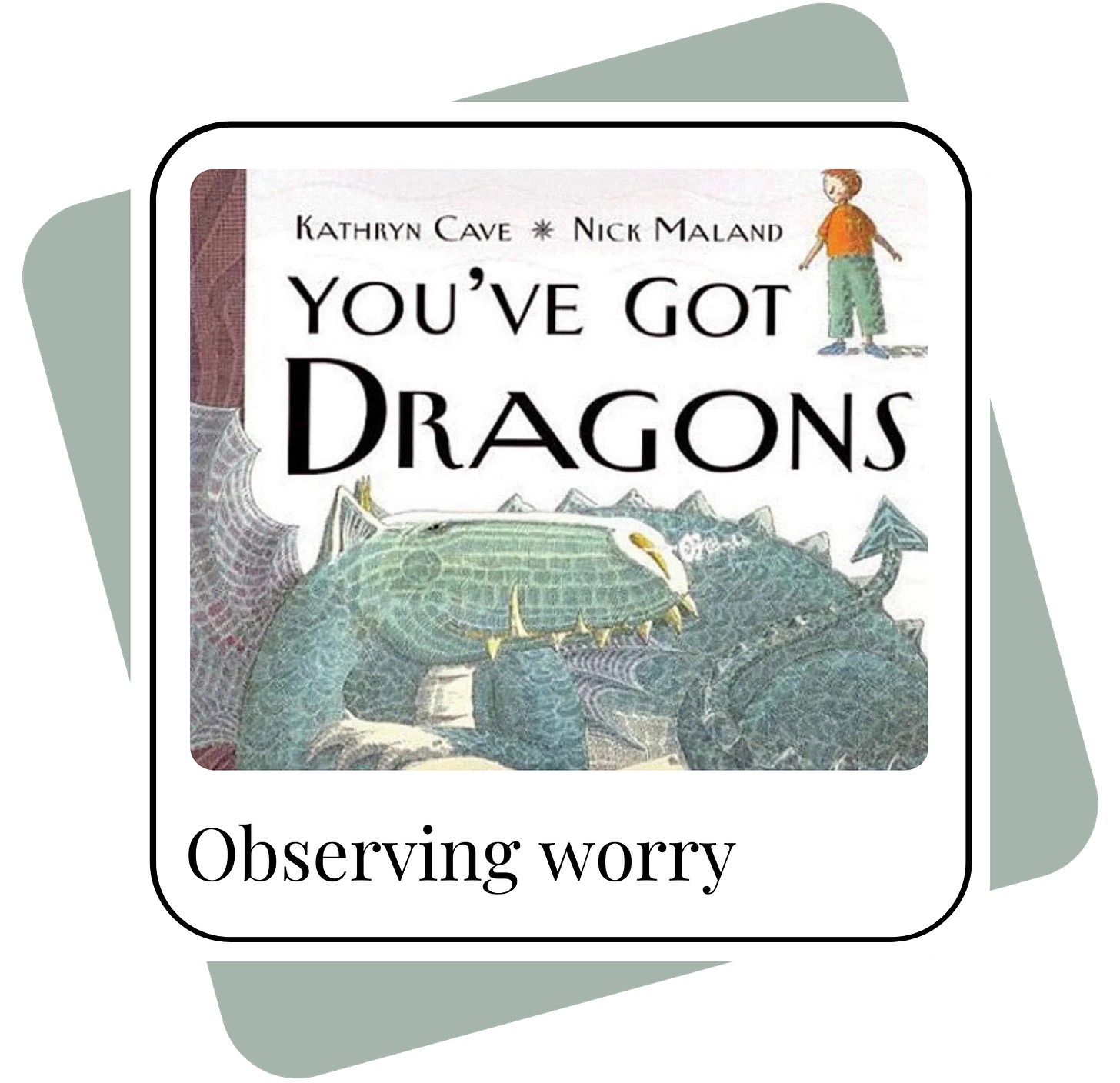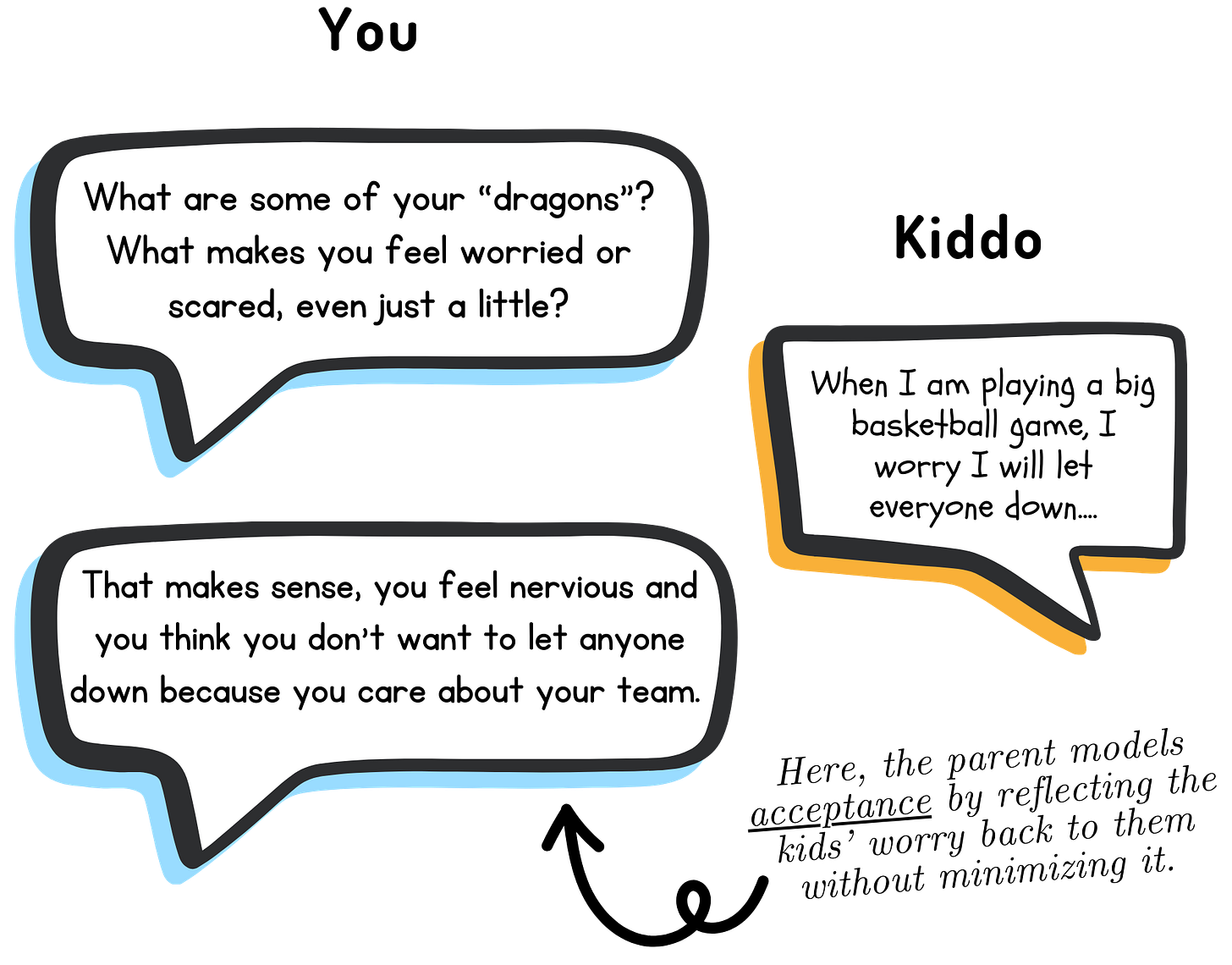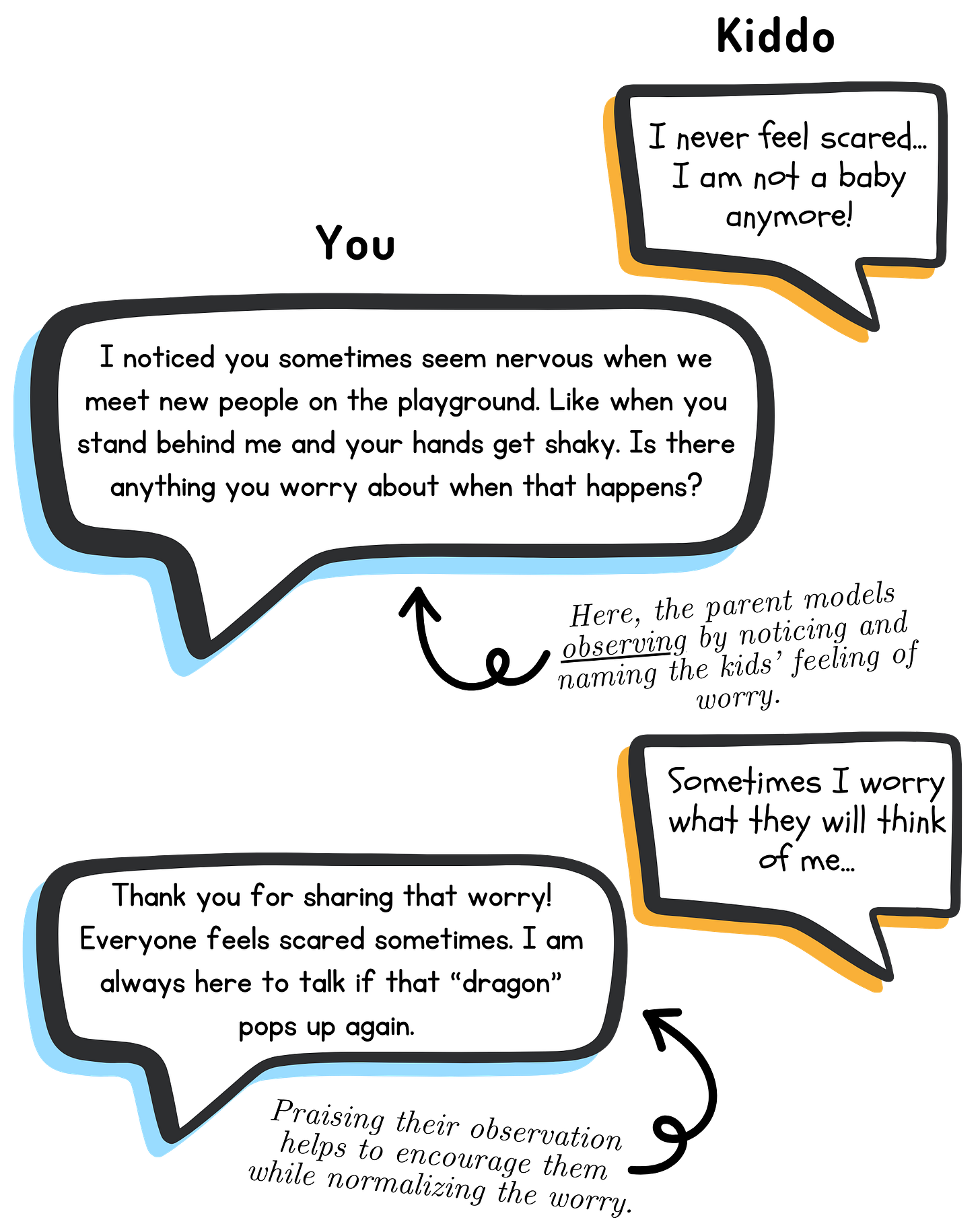How to talk with kids about fears and worries
Pick of the week: October 20, 2025
Clinical psychologists picking kids books rooted in mental health science 🌸
You’ve Got Dragons: A picture book about worry for kids (age 5+)
Each week, we recommend one kids book that teaches a mental health concept. Today, we’re sharing a book that talks about worry: You've Got Dragons, written by Kathryn Cave and illustrated by Nick Maland. This book highlights the skill of observing worry — the idea that acknowledging the presence of negative thoughts, without pushing them away, can actually make them less powerful. Read on to learn why we recommend You’ve Got Dragons to the parents we know, the science behind negative thoughts, and tips for talking to your kiddo about worry.
About the Book
You’ve Got Dragons is an imaginative book about a little boy named Ben who is worried about things like math homework and sleeping with the lights off. The book represents Ben’s fears as whimsical dragons. Through Ben’s story of discovering he’s “got dragons” and learning how to manage them, this book normalizes fear and highlights how observing worry can be used to respond to anxiety. This is a great book for teaching kids a skill for responding to anxious thoughts.
Buy You’ve Got Dragons or read a free preview online
What Science Tells Us about Observing Worry
Research shows that everyone experiences worries and has negative thoughts from time to time. Research has also revealed that how we respond to these thoughts matters. It turns out that trying to ignore or push away a thought - for example, trying not to think about a white bear - usually backfires. Did you just picture a white bear? You’re not alone! In one famous study, people who tried not to think about a bear found the thought popping into their minds, over and over again. Another study concluded that when we try to block out specific thoughts, our brains keep checking whether those thoughts are still there, paradoxically keeping them active (“Am I still thinking about that bear? Oh no! I just thought about it again!”). This phenomenon is known as the “rebound effect.”
Unfortunately, this means that we can’t just snap our fingers and make our thoughts go away, even when they upset us. Because of this, when we work with kids (and adults!) with anxiety, we teach them skills for relating to their worry thoughts differently. We call one of these skills “observing worry” — it’s actually a mindfulness skill which involves noticing and accepting difficult thoughts without trying to fight or change them. For example, we might teach a kid to notice and name their worry thoughts (i.e., “I am worried that Timmy doesn’t like me”) without trying to purposefully make the thought go away. A randomized study found that observing worry is actually more effective at making worries go away than purposefully trying to relax. (Wondering why we’re using the term “observing” and not “accepting”? Check out our explanation here).
You’ve Got Dragons beautifully illustrates how observing worries is a great tool for managing anxiety. As Ben learns to acknowledge his dragons rather than avoiding or battling them, the dragons gradually lose their power over him, and eventually, they stop bothering him altogether.
How to Talk About Observing Worry with Your Kiddo
It’s very common for kids to struggle to notice and name their own worry thoughts. As parents, we can model acceptance and observation of worry thoughts for our kids:
If your child says they don’t have worries or fears, it is okay to ask about something you think they might feel worried about. Try this approach to help them practice “catching” or observing their worry thoughts:
What Marin likes about You’ve Got Dragons: I’m so grateful that this book shows how minimizing kids’ fears isn’t helpful for managing worries. Because caregivers don’t want their child to be distressed, they often rush to reassure their child that a “dragon” is just a “mouse,” but this can make it hard for kids to trust their instincts. Instead, the book’s “Dragon Wisdom” encourages parents to honor their child’s experience of fear while helping them learn from it.
What Betsy likes about You’ve Got Dragons: I love the vivid description of how anxiety can feel in the body: “your heart thuds and your knees wobble and your hands shake and your head whirls.” I can see myself reading this with my son to help normalize emotions and talk about how we can use our body’s signals to help understand our emotions.
Go deeper on the science of anxiety and observing worry:
Need more ideas for helping your anxious kiddo? Try out this free, 20-minute online program that teaches parents ways to help their anxious kids be brave (from Dr. Jessica Schleider’s lab at Northwestern).
Dealing with your own worry? Check out these CBT techniques for tackling worries.
Want to really dig into the science about why pushing away thoughts doesn’t work well? We love this paper in the Journal of Neuroscience on the topic.
Buy You’ve Got Dragons or read a free preview online
We think You’ve Got Dragons would be a great addition to any child’s library. We’d love to hear your reactions to this review and your questions about worry. Reply to this email, or join our community to leave a comment!
FYI: The links above for buying You’ve Got Dragons are affiliate links (see this page for more information).







As a mom of four grown children, I can really appreciate how this book would be very helpful in addressing the “dragons” of worry and anxiety that pop up in all children’s lives. The science-based explanations in this post, of why observing and discussing “dragons” can be very helpful to managing them, was truly exceptional. I think the examples of possible real conversations with our kiddos, and all the links to further expert information, provides the kind of deeper dive extras that really make it possible for caregivers to use this book effectively. Reading this post helps me to understand in my own mind why discussing worries as observable “dragons” is a great approach, so if I were to read this book with a child I could naturally help them to understand too. Thank you Minds in Bloom!!